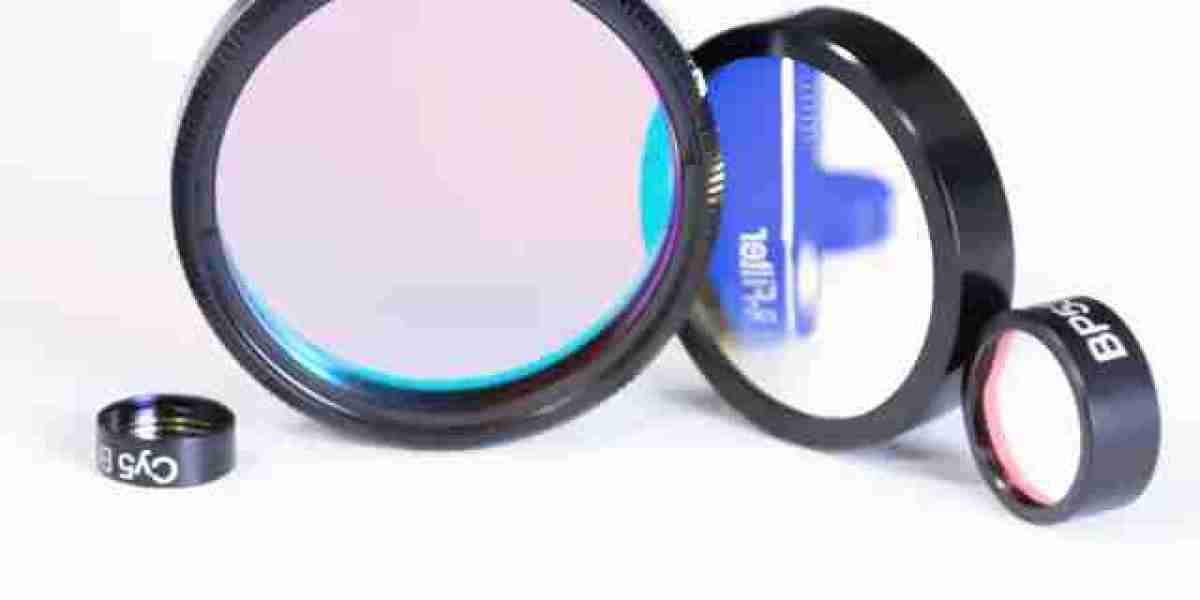Optical filters are vital components used in various applications where controlling the properties of light is crucial. From astronomy to medical imaging, these filters play a critical role in enhancing the performance of optical systems. If you're wondering why optical filters are so important and how to select the right one for your needs, this article will explore their applications, benefits, and the factors to consider when choosing an optical filter.

What Are Optical Filters?
Optical filters are devices that selectively transmit, reflect, or block light at specific wavelengths. They are used to manipulate the light passing through them based on color, intensity, polarization, or other optical characteristics. Optical filters are typically made from glass or plastic that is coated with a material to control the light properties. Depending on the type, optical filters can be used to isolate certain wavelengths, block unwanted light, or enhance certain features in an image.
Types of Optical Filters
Optical filters come in different types, each serving unique functions. Understanding these types is essential for selecting the right filter for your needs.
Bandpass Filters
These filters transmit light within a specific wavelength range while blocking wavelengths outside that range. They are ideal for isolating a particular portion of the light spectrum.
Longpass and Shortpass Filters
Longpass Filters: These filters allow wavelengths longer than a certain cutoff point to pass through while blocking shorter wavelengths.
Shortpass Filters: These filters allow wavelengths shorter than a specific cutoff point to pass through while blocking longer wavelengths.
Neutral Density (ND) Filters
ND filters reduce the intensity of light without affecting its color. They are commonly used in photography to prevent overexposure in bright conditions.
Dichroic Filters
Dichroic filters selectively reflect certain wavelengths while allowing others to pass. These filters are often used in lighting systems for creating colored lighting effects.
Polarizing Filters
Polarizing filters are used to control the polarization of light, reducing reflections and enhancing contrast. They are commonly used in photography and microscopy.
Notch Filters
Notch filters block a specific narrow band of wavelengths and allow others to pass. They are used in spectroscopy and laser applications to remove unwanted spectral lines.
Infrared and Ultraviolet Filters
These filters are used to isolate either infrared (IR) or ultraviolet (UV) light. They are often employed in imaging systems where specific wavelengths outside the visible spectrum need to be captured or blocked.
Why Are Optical Filters Important?
Optical filters serve numerous purposes and have significant importance in various fields. Here are some of the reasons why optical filters are crucial:
1. Enhancing Image Quality
Optical filters are widely used in imaging applications to enhance the quality of captured images. By blocking or transmitting specific wavelengths, optical filters improve contrast, reduce glare, and eliminate unwanted spectral components. This is particularly important in fields like microscopy, photography, and astronomical imaging.
2. Protecting Sensitive Equipment
Certain optical devices, such as cameras and sensors, can be damaged by excessive light intensity. Neutral density filters are used to limit the amount of light reaching sensitive components, ensuring that these devices are not damaged while capturing high-quality data.
3. Isolating Specific Wavelengths
Optical filters are essential for isolating specific wavelengths of light for research and analysis. In applications like fluorescence microscopy, bandpass filters allow researchers to observe only the emitted light from a fluorescent dye, eliminating background noise and increasing the clarity of the observation.
4. Medical and Scientific Applications
In medical imaging and diagnostics, optical filters play a key role in enhancing the accuracy of various techniques, such as endoscopy and fluorescence imaging. For instance, optical filters are used to isolate the specific wavelengths of light emitted by dyes that highlight particular tissues or cells, providing better visualization and more accurate diagnosis.
5. Improving Efficiency in Laser Systems
Optical filters are used in laser applications to ensure that only the desired wavelength is transmitted or reflected. This improves the efficiency of the laser system and reduces the likelihood of interference or unwanted reactions. In telecommunications, optical filters are essential for managing different wavelengths in fiber-optic communication systems.
6. Controlling Ambient Lighting
Optical filters are useful for controlling ambient lighting in situations where precise lighting conditions are required, such as in microscopy or colorimetry. By selectively filtering out unwanted light, optical filters ensure that only the desired wavelengths reach the detector, leading to more accurate results.
How to Choose the Right Optical Filter
Choosing the right optical filter depends on your specific application and the characteristics of the light you want to manipulate. Here are some key considerations:
1. Determine Your Application Needs
The first step in choosing an optical filter is understanding the specific requirements of your application. Are you trying to isolate a certain wavelength, reduce light intensity, or block out certain spectral components? The type of optical filter you need will depend heavily on the intended use.
Photography: For reducing glare and enhancing colors, consider polarizing filters. ND filters are useful for controlling exposure.
Microscopy: Bandpass filters are ideal for isolating specific wavelengths for fluorescence microscopy.
Laser Systems: Dichroic filters and notch filters are useful for managing laser beams and filtering specific wavelengths.
2. Consider Wavelength Range
Optical filters are designed to work at specific wavelength ranges. It is essential to choose a filter that matches the wavelength range required for your application. For example, UV filters are needed if you need to block ultraviolet light, while infrared filters are required for IR applications.
3. Transmission and Blocking Requirements
Consider how much light you need to transmit and how much you need to block. This is particularly important for applications like imaging, where contrast and clarity are essential. Transmission values are usually represented as a percentage, and you should choose a filter that provides the required level of light transmission for your application.
High Transmission: If you need as much light as possible, choose a filter with a high transmission rate.
Selective Blocking: For applications requiring specific wavelengths to be blocked, such as fluorescence microscopy, choose filters with high blocking capabilities for undesired wavelengths.
4. Optical Density
Optical density (OD) is a measure of how much light a filter can block. Filters with high OD are suitable for applications that require strong attenuation of certain wavelengths, such as laser protection. Understanding the optical density you need will help you select a filter that meets the safety and performance requirements of your setup.
5. Material and Coating
Optical filters are made from different materials, including glass, plastic, and quartz. The choice of material depends on the application and the wavelength of light:
Glass Filters: Suitable for visible light and general applications. They are durable and offer high optical quality.
Quartz Filters: Ideal for UV and IR applications due to their high transmission at these wavelengths.
Coatings on filters also play a significant role in determining their performance. Anti-reflective coatings, for instance, can reduce light loss and improve the efficiency of the filter.
6. Size and Shape Compatibility
Make sure the optical filter you choose is compatible with your optical system. Filters come in various shapes (e.g., circular, rectangular) and sizes, so it's essential to match the dimensions of the filter to your equipment.
7. Environmental Considerations
Consider the environment where the filter will be used. Filters used in harsh environments need to be resistant to temperature changes, moisture, and other environmental factors that could affect their performance. Coatings such as anti-reflective or protective layers can be beneficial in extending the life of your optical filter.
Applications of Optical Filters
1. Photography and Videography
Optical filters are commonly used in photography to control light and create artistic effects. Polarizing filters reduce glare, while ND filters help manage exposure, allowing for more creative control over the final image.
2. Scientific Research
In scientific research, optical filters are used in spectroscopy to isolate and analyze specific wavelengths of light. They are also used in fluorescence microscopy to enhance the contrast of samples labeled with fluorescent dyes.
3. Medical Imaging
Optical filters are crucial in medical imaging systems like endoscopy and fluorescence-guided surgery. They help in isolating specific wavelengths for better visualization of tissues and cells, improving diagnostic accuracy.
4. Astronomy
Astronomers use optical filters to enhance their observations by blocking out unwanted wavelengths, such as light pollution, and isolating specific spectral lines emitted by celestial objects. This allows for more detailed analysis of stars, planets, and other astronomical bodies.
Conclusion
optical filters are indispensable tools in various fields, from photography to medical imaging and scientific research. Their ability to manipulate light properties allows for enhanced image quality, protection of sensitive equipment, and improved efficiency in optical systems. To choose the right optical filter, it’s crucial to consider your specific application, the wavelength range, transmission and blocking requirements, and the type of material and coating. By understanding the role and importance of optical filters, you can make informed decisions to achieve optimal results in your projects and experiments.



